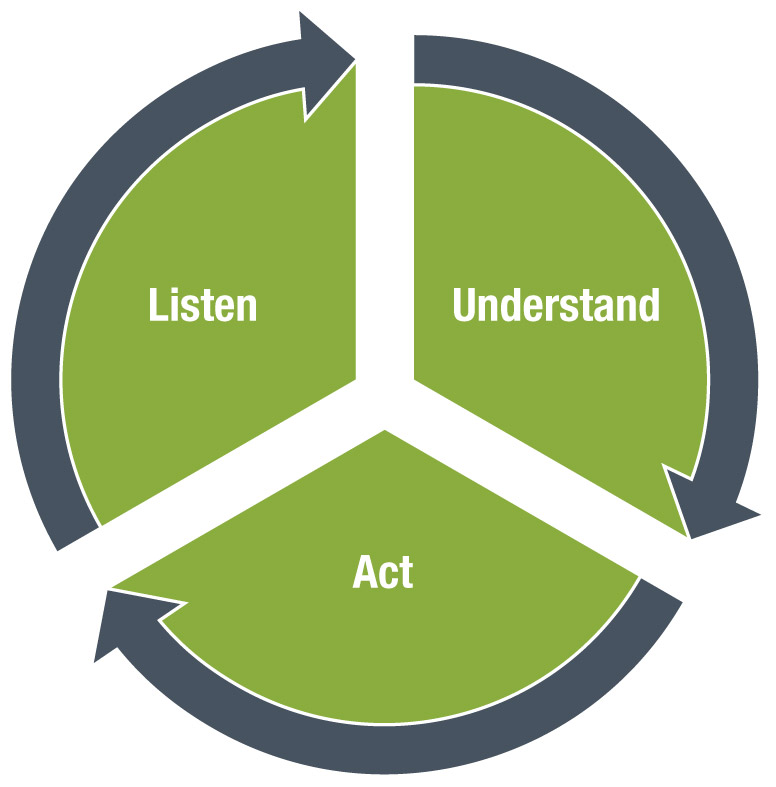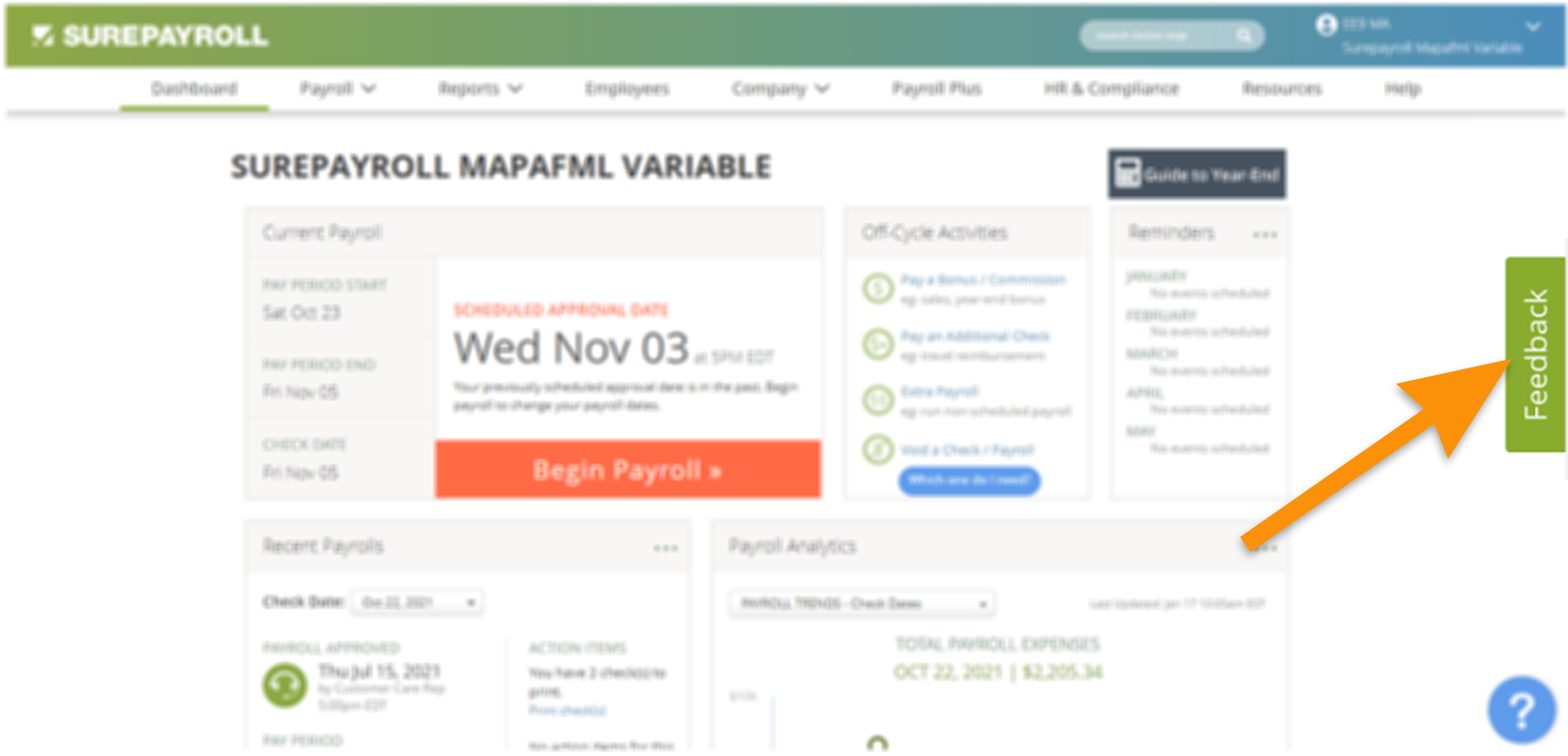The Payroll Blog
News, tips, and advice for small business owners
- Home
- Resources
- Payroll Blog
- Importance of a Voice of the Customer Program for Your Business
The Importance of a Voice of the Customer Program for Your Business
What is Voice of the Customer, the benefits of having a customer feedback program, and ideas to get started with your own.

Close your eyes and take yourself back.
The year is 2004. Your colleagues are talking about the Boston Red Sox big World Series win, there’s this ‘new’ thing on the web called Facebook (it will never last), and Adam Sandler took Drew Barrymore on 50 first dates. However, there’s one thing your colleagues weren’t talking about around the water cooler: customer experience.
As Bob Dylan would say, “The times they are a-changin’.”
The concept of customer experience (CX) is still a relatively new focus area for most businesses and customer success teams. A quick look on Google shows the term ‘customer experience’ hovering around the 20% mark of all 2004 searches on their platform. Compare this to 2021 where ‘customer experience’ brings in an impressive 89% average of all 2021 searches.
While there are many factors, the evolution of technology – especially social media – has given a huge amount of power and influence to the customer. It’s more important than ever for your company to not only listen closely to your customers but to create a plan for addressing their concerns as well as appreciating any positive feedback.
For us at SurePayroll, this means investing in the development and expansion of our very own Voice of the Customer Program.
What is a Voice of the Customer Program?
Voice of the Customer (VoC) stands for listening to your customers’ feedback – both the good and the bad. Creating a true Voice of the Customer Program takes the act of listening to your customers to a new level.
It can be easy to think listening is enough. However, without an established process for gathering that valuable feedback and a defined plan for making real changes based on that feedback, your efforts may come across as insincere.

The new Voice of the Customer Program we’re creating at SurePayroll establishes the importance of customer feedback to our business. We have always listened to our customers, but now we’re making it official – changing our status from ‘it’s complicated’ to ‘in a relationship’.
3 Benefits of a Voice of the Customer Program
Almost every company will say they listen to their customers. But add the follow-up question, “How are you encouraging and responding to customer feedback?” Now you’ll see many companies start to falter with a confident answer.
Why is the voice of the customer important? An established VoC Program illustrates how your company represents:
- Commitment – A customer feedback program shows your company’s dedication to your customer base. It elevates your statement from, “We listen to our customers”, to “We’ve created an entire program dedicated to better understanding our customers.”
- Agility – If the last few years have taught us anything, it’s that companies must be capable of quickly reacting to changes. A feedback program shows your company’s capability to receive feedback and quickly adapt to fit the needs of your customers on a daily basis.
- Transparency – Customers want to know their feedback matters. Creating a customer feedback program doesn’t stop with listening. You must also acknowledge the feedback, admit when something is wrong, and show how your company will rectify the situation.
When a company shows commitment, agility, and transparency, the business reduces churn and increases customer retention.
Moving Beyond the Customer Satisfaction Survey
One of the key elements of VoC programs is not just allowing feedback but encouraging more of it. This step is where many companies get stumped.
Here are some of the customer feedback opportunities we have already established, are in the process of implementing, or hope to use in the future at SurePayroll:
- Net Promoter Score – Also known as the NPS, these customer surveys are a great opportunity to get your customers’ perspectives about the experiences you provide. Simply asking for a feedback score of 0-10, the methodology provides an overall temperature gauge to see when customers are trending more positively or more negatively.
- Passive Feedback Form – The majority of feedback forms businesses use right now only relate to support or technical issues. Alternately, a passive feedback form offers a place to give more general feedback such as, “Can we sort this data by date instead of name?” Feedback like this might change your process, expand your offered services, or even spur the creation of a new product. If you’re a SurePayroll customer, log in and share your passive feedback today (click the green ‘feedback’ tab on the right side of the screen on the website).

- Customer Interviews – What’s the best way to hear your customers’ needs? Talk to them. Not only will this tell you what a customer wants, but it is a great way to increase your customer retention and solidify your customer relationship.
- Online Reviews – A Gartner report revealed 85% of buyers trust online reviews as much as a personal recommendation. Online customer reviews are a great way to collect customer data and often lead to more candid customer insights you may be missing with internal feedback opportunities.
- Customer Satisfaction Survey – There’s a reason this is the tried-and-true way businesses chose to gather customer-centric data. If you’re already using one to gather survey responses, make sure it includes both closed-ended and open-ended questions to maximize feedback data. Are there questions you should add or remove because they’re not leading to productive VoC data? If you’re still stuck, there are dozens of templates online for you to get question ideas.
There are a seemingly endless number of touchpoints to collect direct feedback. However, your VoC strategy won’t be able to close the feedback loop if you don’t have a resource dedicated to translating all this valuable information into actionable insights.
You need someone fully invested in uploading all the feedback in real-time. This is not a task you merely add to someone’s current workload. Then create a universal spot where all these metrics and data can be stored – either a basic spreadsheet, CRM, or a dedicated feedback program. Be sure to follow up right away if you’re missing any details needed to provide a follow-up in the future.
Fast Five: Questions About Starting Your Own VoC Program
If you’re ready to start a successful VoC program for your business, you may still have a few questions. We’ve pulled together a quick run-down of some of the most popular questions around these customer feedback programs.
- Who is responsible for creating a Voice of the Customer Program? This should be a cross-departmental initiative including stakeholders from all levels of the company. That said, establishing a person or dedicated team to champion the program is key to its success.
- How to pitch a survey to customers? There are a lot of options here, and the answer is: everywhere. Have a mobile app? Add this to your app’s menu and send a notification to users. If you have a brick-and-mortar store, use signs or tabletop displays with links or QR codes sending customers to the survey. For SaaS or other online companies, prominently display in menus, dashboards, or other footers. Additionally, send an announcement to your database (email, text alerts, social media, etc.) – this is a big deal; treat it as such.
- What should I do with bad feedback? No matter how much you love your business, customers are going to find problems or aspects they don’t agree with. The worst thing you could do is ignore the negative feedback. Instead, face it head-on: respond to the negative feedback, acknowledge their request, and if it’s an error, admit fault and apologize.
- How to encourage customers to give feedback? You can always reward customers for providing feedback, but that can get expensive and often doesn’t lead to the most productive answers. Ultimately, the best way to encourage feedback is to show that your business is listening, responding, and taking action. It’s a cycle – the more you do, the more they’ll do.
- Who should you survey? Everyone. Whether they’re a brand-new customer or a veteran, whether they’ve decided to cancel or are still moving along your customer journey, every experience is valuable.
A customer feedback program will empower customers with knowing they have a role in your product development, customer support opportunities, product offerings, and even business operations. The bottom line – a VoC program isn’t just about the company. It often helps your customers nearly as much as it helps your business.
View Our Plans and Pricing
Small Business Is Our Business.
This website contains articles posted for informational and educational value. SurePayroll is not responsible for information contained within any of these materials. Any opinions expressed within materials are not necessarily the opinion of, or supported by, SurePayroll. The information in these materials should not be considered legal or accounting advice, and it should not substitute for legal, accounting, and other professional advice where the facts and circumstances warrant. If you require legal or accounting advice or need other professional assistance, you should always consult your licensed attorney, accountant or other tax professional to discuss your particular facts, circumstances and business needs.
